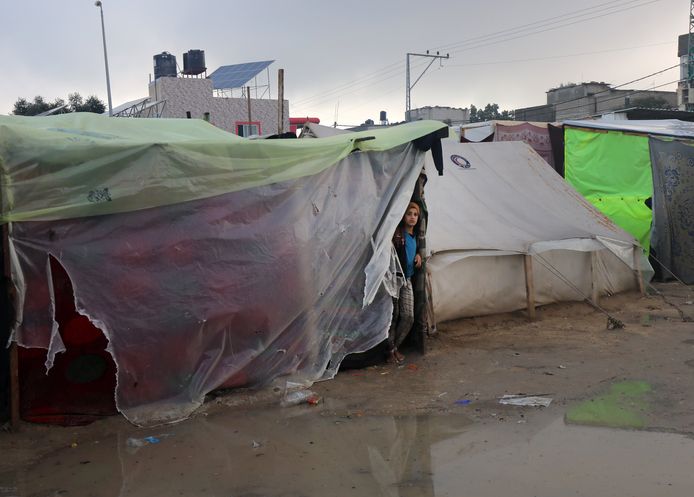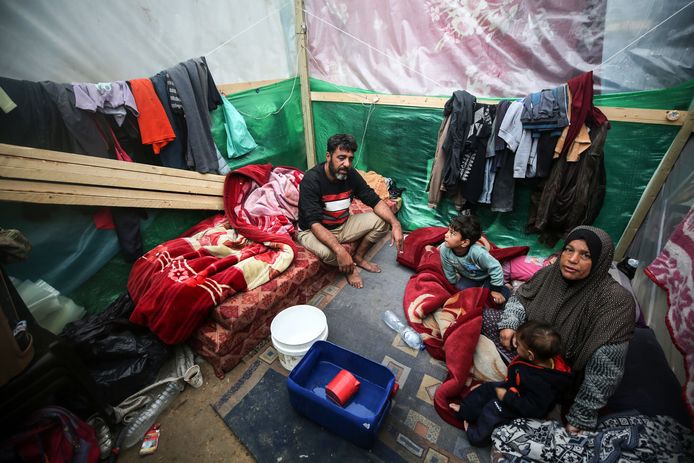Gaza was hit by heavy rains, washing away or submerging temporary tents for Palestinian refugees, and some areas were even completely submerged. This makes living conditions more dangerous for displaced families. The head of the United Nations Agency for Palestinian Refugees described the current conditions in the coastal strip as “living hell.”
Strong winds and heavy rain added to the misery of displaced families in Gaza on Wednesday night. Some families have good tents, but others have to make do with tarpaulins or thin, clear plastic. Many tents do not have a ground cover, so many people spent the night on the wet sand.
Their fragile tents could not withstand the weather conditions, leading to floods. Clothes and blankets were wet, making it more difficult to stay warm.
“Our tent was torn apart and water poured on us. We were drowned,” said Ramadan Muhaddad, a middle-aged man currently trying to repair his makeshift tent made of strips of plywood and a thin plastic sheet.
“We did our best to protect ourselves so that the water would not reach, but the rain came in. This plastic does not protect the people sleeping under it,” Mahdad continues.
Amin Adwan, who lives with thousands of others in Al-Aqsa Hospital in central Gaza, described that hellish night to Agence France-Presse. “Rainwater seeped in. We couldn’t sleep and tried to find pieces of tarpaulin, but to no avail.” Adwan and his family had to use stones and sand to prevent the rain from falling.
“Hell on Earth”
Philippe Lazzarini, head of the United Nations Agency for Palestinian Refugees (UNRWA), describes these harsh conditions as “hell on earth.”
He said that the people of the Palestinian territories “are facing the darkest chapter in their history since 1948, which is a painful history.”
The city of Rafah, next to the border with Egypt, is located in the extreme south of the Gaza Strip, where more and more people are flocking to escape the intense fighting between Israel and Hamas, which is now taking place in both the north and south.
“Most Gazans have been forcibly relocated, largely to the southern part of the Strip. Rafah is now home to over a million people, whereas it was once home to around 280,000 people. “There is a lack of infrastructure and resources to support such a population. In our warehouses, families live in small spaces separated by blankets hung on thin wooden frames. Thin shelters have sprung up everywhere in the outdoors. Rafah has turned into a community of tents.”


Free unlimited access to Showbytes? Which can!
Log in or create an account and never miss a thing from the stars.
